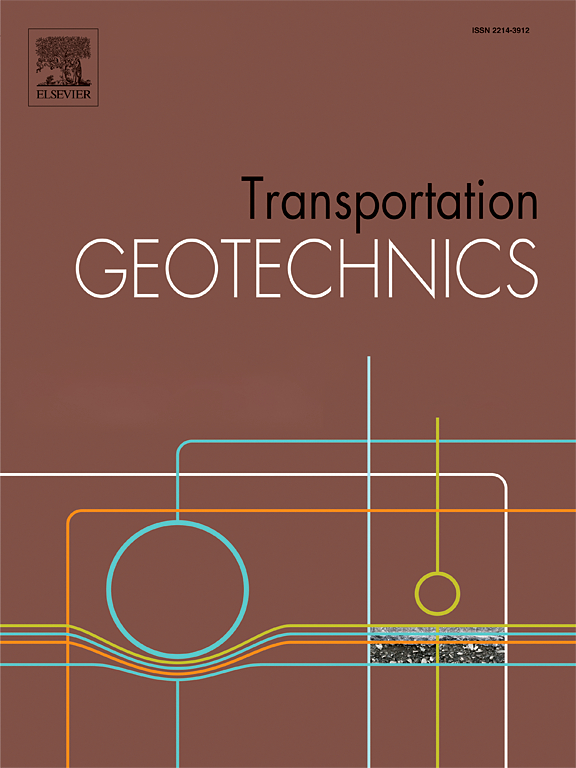Performance evaluation of rail-mounted quasi-distributed optical fiber sensors for monitoring track transitions
IF 4.9
2区 工程技术
Q1 ENGINEERING, CIVIL
引用次数: 0
Abstract
Regular inspections of railroad tracks help ensure safe and cost-effective operating conditions. Inspection of track transitions is especially critical as these locations are subjected to high loads that can result in rapid deterioration. Optical Fiber Sensors (OFSs) represent one of the latest technologies for long-term, continuous structural health monitoring in harsh environments like railroad tracks. This paper presents findings from an ongoing research study evaluating the suitability of OFSs for monitoring and real-time condition assessment of track transitions. This paper reports on the laboratory and numerical modeling performance of the Fiber Bragg Grating (FBG) type of OFS. Data collected using FBG sensors are compared with those from conventional sensors such as strain gauges and Linear Variable Differential Transformers (LVDTs). The results confirm that rail mounted FBG sensors can accurately measure strain values under different levels of loading. Rail deflections calculated from these strain values match well with deflections measured using LVDTs.
求助全文
约1分钟内获得全文
求助全文
来源期刊

Transportation Geotechnics
Social Sciences-Transportation
CiteScore
8.10
自引率
11.30%
发文量
194
审稿时长
51 days
期刊介绍:
Transportation Geotechnics is a journal dedicated to publishing high-quality, theoretical, and applied papers that cover all facets of geotechnics for transportation infrastructure such as roads, highways, railways, underground railways, airfields, and waterways. The journal places a special emphasis on case studies that present original work relevant to the sustainable construction of transportation infrastructure. The scope of topics it addresses includes the geotechnical properties of geomaterials for sustainable and rational design and construction, the behavior of compacted and stabilized geomaterials, the use of geosynthetics and reinforcement in constructed layers and interlayers, ground improvement and slope stability for transportation infrastructures, compaction technology and management, maintenance technology, the impact of climate, embankments for highways and high-speed trains, transition zones, dredging, underwater geotechnics for infrastructure purposes, and the modeling of multi-layered structures and supporting ground under dynamic and repeated loads.
 求助内容:
求助内容: 应助结果提醒方式:
应助结果提醒方式:


